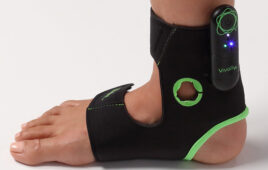Cortland Biomedical, Cortland, N.Y.

Engineers at Cortland Biomedical are developing fabric patterns to alternately prevent leakage and promote tissue regeneration. (Image from Cortland Biomedical)
The medical textile industry is moving toward fully electronic knitting machines with software that allows for infinite patterns and repetitions. This technology replaces older machines that were unable to produce density variations within one fabric unless gears were changed manually.
Armed with these machines and their advanced software, engineers at Cortland Biomedical (Cortland, N.Y.) have begun developing fabric patterns with areas that vary in density to alternately prevent leakage and promote tissue regeneration. This type of fabric is designed to work well with mitral valve replacements, hernia mesh and tissue scaffolds for shoulder repair.
Knit patterning software enables the engineers to create custom patterns with dimensions, permeability and axial stretch to suit the application and native anatomy of the implantation site. Variations in knit density can also give surgeons clear clues for suture and attachment zones.
“What’s really, really innovative about this fabric is that you can change density so rapidly,” said Shanzeh Farooqui, development engineering lead at Cortland Biomedical. “It really changes the game as far as surgical applications.”
Programming the machines for the right density initially proved challenging to Farooqui and development engineer Michelle Lishner. So did figuring out how to geometrically reinforce the structure of fabric to make it very strong while using very small yarn for minimally invasive procedures.
To solve both problems, Farooqui and Lishner had to manipulate parameters such as courses per inch (CPI) and wales per inch (WPI) to influence porosity, thickness, flexibility and stability. Changing those parameters allows the fabric to stretch in one direction and be more rigid in the other, Farooqui explained.
“Every fabric that we create is completely custom,” Lishner added. “With software that’s so advanced, our pattern options really are infinite.”




